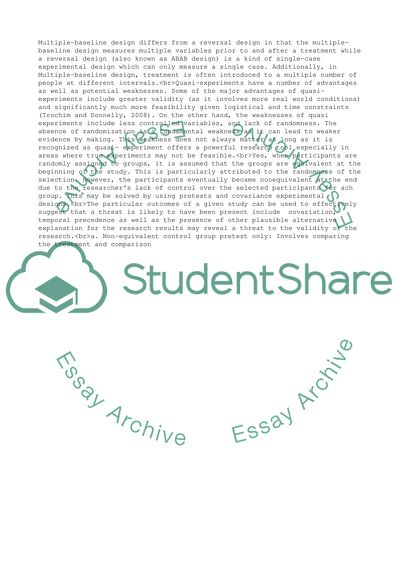Cite this document
(“Discuss Quasi-Experimental Designs Coursework Example | Topics and Well Written Essays - 1250 words”, n.d.)
Discuss Quasi-Experimental Designs Coursework Example | Topics and Well Written Essays - 1250 words. Retrieved from https://studentshare.org/business/1674218-discuss-quasi-experimental-designs
Discuss Quasi-Experimental Designs Coursework Example | Topics and Well Written Essays - 1250 words. Retrieved from https://studentshare.org/business/1674218-discuss-quasi-experimental-designs
(Discuss Quasi-Experimental Designs Coursework Example | Topics and Well Written Essays - 1250 Words)
Discuss Quasi-Experimental Designs Coursework Example | Topics and Well Written Essays - 1250 Words. https://studentshare.org/business/1674218-discuss-quasi-experimental-designs.
Discuss Quasi-Experimental Designs Coursework Example | Topics and Well Written Essays - 1250 Words. https://studentshare.org/business/1674218-discuss-quasi-experimental-designs.
“Discuss Quasi-Experimental Designs Coursework Example | Topics and Well Written Essays - 1250 Words”, n.d. https://studentshare.org/business/1674218-discuss-quasi-experimental-designs.


